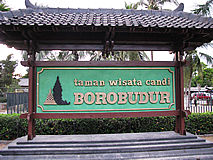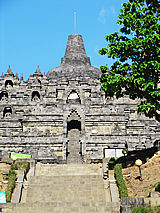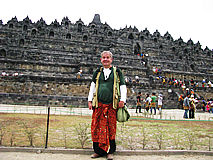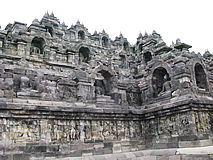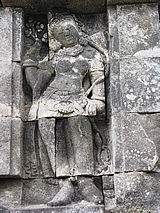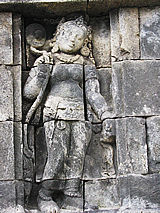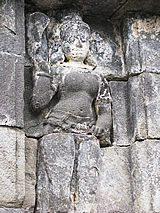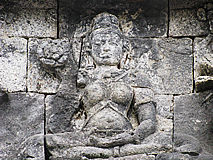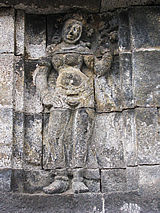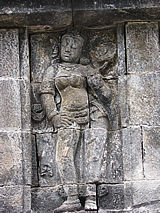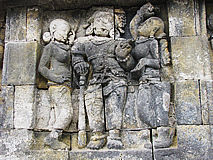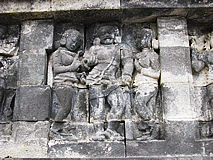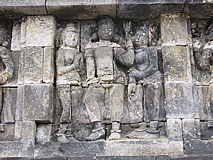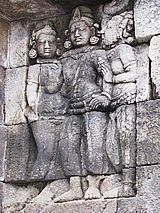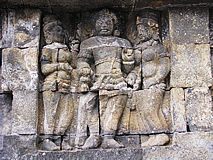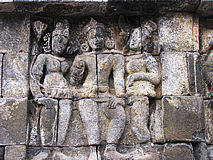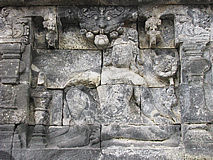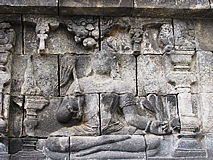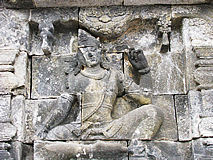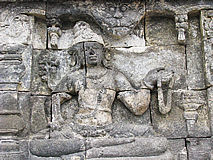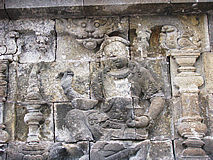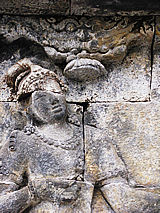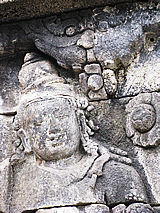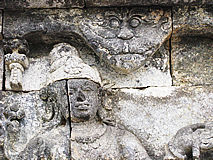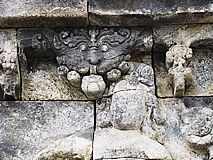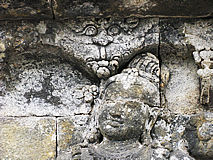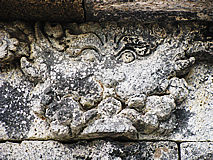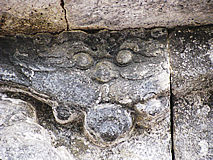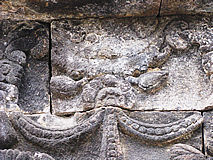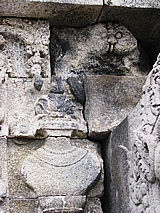CultureRenewalInitiative
HEALING THE PLANET
To begin with yourself
VIVA! JAVA
* Javanese mysticism
(Kebatinan) & Traditional Javanese religious tolerance: a model to the world?
*The Yogya Kraton Myth
*Taman Sari
*The Gunungan
*Tutup Ngisor
*What we can do for Java....
*Java: Land of Kala, its Candi's (Temples):
*Borobudur 1
*Borobudur 2
*Borobudur 3
*Borobudur 4
*Borobudur 5
*Borobudur 6
*Candi Mendut
*Candi Pawon
*Candi Ngawen
*Candi Sari
*Candi Kalasan
*Candi Sambisari
*Candi Prambanan
*Candi Lumbung
*Candi Bubrah
*Candi Sewu
*Candi Plaosan
*Candi Gebang
*Candi Ijo
*Candi Banyunibo
Borobudur: World Holy Site
Its Javanese foundation
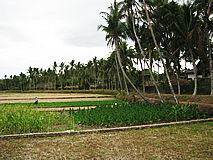 |
View from hotel room |
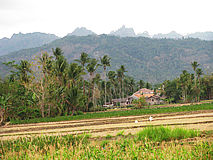 |
Entry to Borobudur |
||
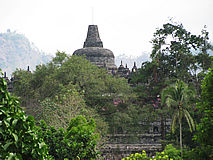 |
Approaching
Borobudur: |
|
Joy, joy |
||
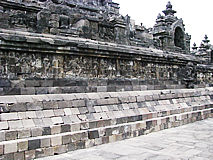 |
First gallery: outer relief |
|
GODDESSES The author J.Miksic considers this relief as NOT related to the rest of the Borobudur. What he means is, that these images are not part of the Buddha story. He classifies it as a random collection of Forest Nymphs, Protection Demons and male figures without any meaning.... |
||
|
|
|
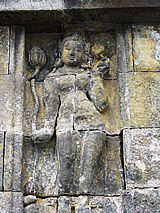
Whatever definition we give them: fact is that these women are "independent" (not relying on a man), self-confident, beautiful and joyful |
||
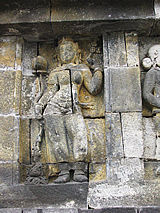 |
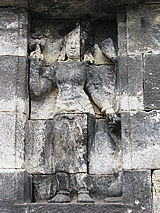 |
|
|
||
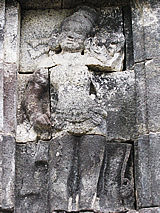 |
However, religious symbols always have a meaning! So, the opposite is true. Borobudur acknowledging its roots in both nature and in pre-Buddhist times. A unique phenomenon, since mainstream Buddhism distances itself from it. By defining this lower level as "insignificant" because its emphasis on archaic times Miksizs unknowingly confirms that there was a continuum in time between the Buddha era and the pre-Buddhist world! In which nature and femininity were revered..A typical Javanese "syncretistic" approach. |
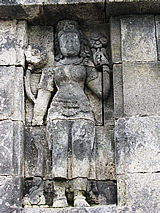 |
For sure a main Deity |
||
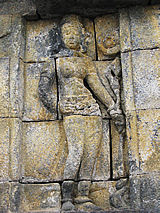 They weren't THAT unimportant. Because on this level pilgrims circumbulated the Borobudur, having direct eye contact with these Goddesses.... |
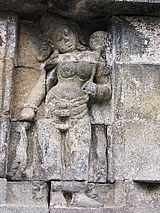 |
|
|
||
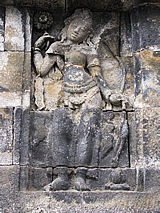 |
I distinguish three stages: A clearly women-dominated one (Goddesses), the rise of patriarchy in which women become concubines of Gods and Kings (Trio's) and the Ruler, who still governs "in the Name of the Mother" (Kala) |
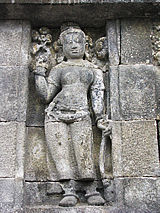 Many Goddesses have leaves and flowers in their hands, which reminds one of the Goddesses of the Middle East |
|
||
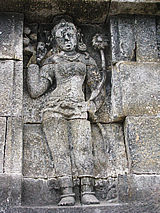 |
THE TRIO'S From "strong and independent women" to concubines, the fate of all women in the transition to patriarchy. Why the "women issue" is important? Don't forget that the initiative to build Borobudur is strongly linked to a Queen! Probably living in the context of the old times, in which the King still revered his wife as a Goddess... To such an extent that Borobudur as a whole - as I have elaborated - can be considered a Cosmic Mother Sanctuary |
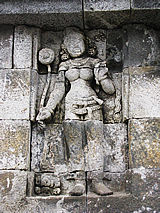 |
|
||
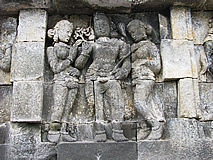 Pampering the Ruler.... |
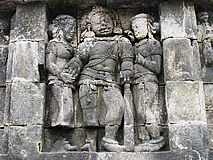 Pleasing him in all kinds of ways... |
|
|
||
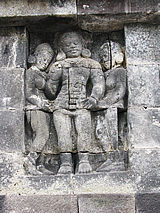 Little is left of the original aura..... |
To have your roots in nature is very Javanese. The latter have always cherished it. Driving... through the kampungs you grasp what I mean. Many such villages still remain part of the green around them. Not trees planted in the village, but the village planted in nature! While nature in Hinduism is ritualized, finally becoming abstract in Buddhism, ancient Javanese culture has always kept it alive. |
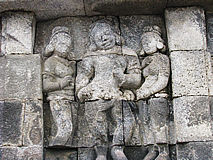 Except charm and beauty, behaving like the man wants them to behave |
|
||
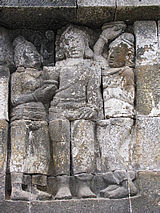 |
Obviously, I am well informed about opinions of scholars, who have already categorized these images. My approach. on the other hand is to view them with fresh eyes without pre-conceived ideas. E.g. "apsara" immediately labels the females, causing only standard conclusions. And yes, these images may come straight away from India.... however, it were the Javanese who decided to give them a special place on their Borobudur. Everything according to their own value system |
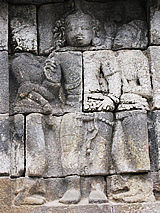 |
Empowered by "his" women, the Ruler is over-confident |
||
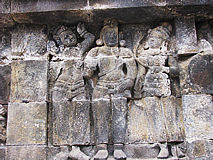 |
Women played a big role in this. If my hypothesis of the sequence in time, depicted here in the first outer layer is true, then in very old times women were the "center of the universe". Despite all later developments, including the Islamic conquest of Indonesia, something of this old culture can still be sensed. Despite the fact that Java is thoroughly patriarchal, people still talk about the "feminine roots of Java" |
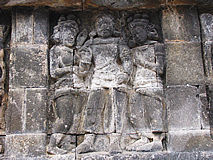 |
|
||
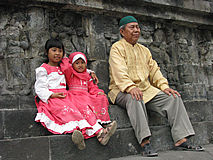 A proud Muslim father with (grand)children |
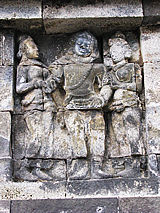 |
|
|
||
| IN THE NAME OF THE MOTHER | 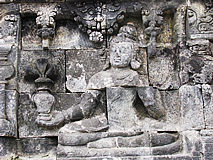 |
|
|
||
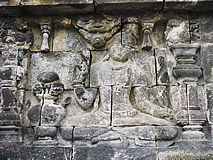 |
Even the men have an aura of gentleness. It means that "Javanism" has had the greatest impact on the people of this blessed island. Hinduism, Buddhism and Islam are just superstructures, that failed in destroying the original foundation. That's why Kala - as Primordial Mother - has managed to remain the Supreme Deity. Here, She is the "Protective Demon" to Rulers, Kings and Gods.... |
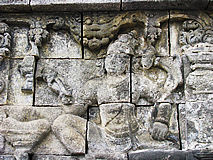 |
|
||
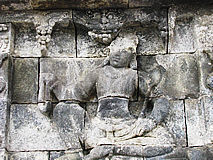 |
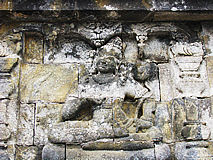 |
|
|
||
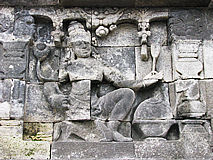 Kala isn't the "God of Time". For why should he be portrayed as a Demon? |
The pictures shown here are approximately only one tenth of all the images on the relief of the first layer. All Kings e.g. Gods enjoy the protection of Kala, the Original Coismic Mother. They all revere Her as Ultimate Reality, they rule "in the name of the Mother". Obviously, I cannot be sure if at those times people were fully conscious of the True Nature of Kala. Even if they thought it to be the "God of Time" - reminding them of the universe ruled by continuous "Death and Rebirth" - a memory of the Mother is still hidden in it |
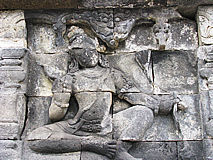 Only important (and therefore threatening) major Deities from previous era's are portrayed as Demons! |
Only the Mother "archetype" is including both "destruction and creation" |
||
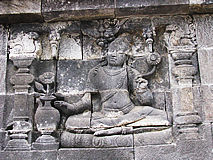 |
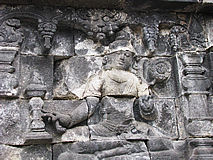 |
|
|
||
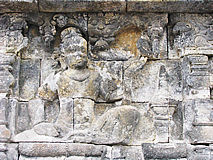 |
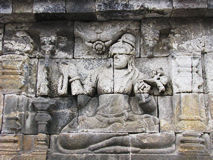 |
|
CLOSE UPS 1 In the close-ups it becomes even more clear how close the relationship between Mother and Sons" was. It can be compared to the ancient image of Isis and Her Son Horus, later copied by Christianity (Virgin Mary with Jesus) |
||
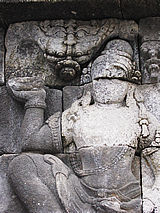 |
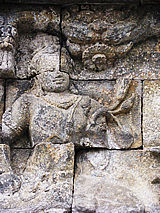 |
|
|
||
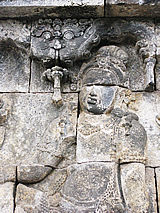 |
How striking this is! The Rulers make conscious contact with Kala, asking Her for inspiration, strength and support. This can be observed everywhere in the beginning of patriarchy. In Africa many Kings indeed rule in the name of their Queen-Mother. |
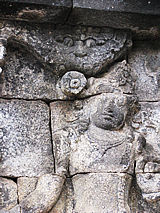 |
|
||
 |
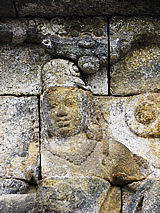 |
|
Seeking refuge in the Mother... |
||
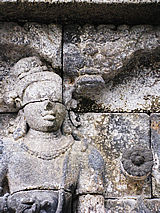 |
CLOSE UPS 2 | |
|
||
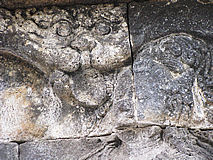 |
How intimate e.g. close is this contact |
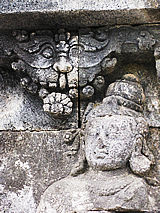 |
|
||
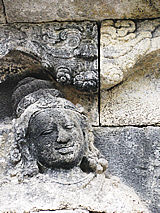 |
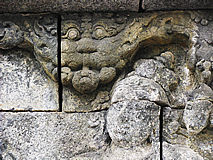 |
|
|
||
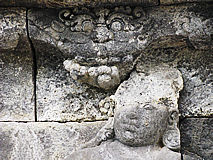 |
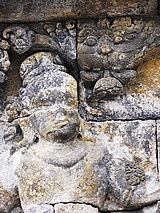 |
|
CLOSE UPS 3 Last but not least a close-up of the Kala heads proper. Why do they look that way? Well, every major religion started to suppress its predecessor. The main Deity of the past became a Demon in the current one. Therefore they are depicted as ugly as possible. E.g. the Great Mother of pre-Christian times became a (the) devil. In the East the attitude was a little more "humane". The Mother became Kala, the "Protective Guardian" of Hinduism and Buddhism. |
||
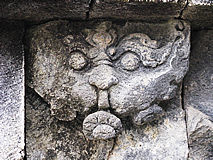 |
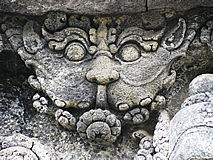 |
|
|
||
 |
Understanding that Kala is the result of suppression great compassion arises. One starts to see behind the image, realizing that the latter in fact is the Cosmic Mother, the Origin of the Light and the universe. |
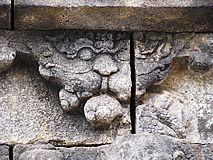 |
|
||
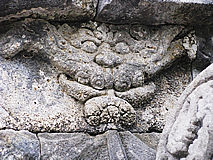 |
 |
|
CLOSE UPS 4 These Kala's have foliage coming out of Her mouth. They thus resemble the Green Men of the West. Indeed, there exist a direct relationship between Kala's and the LINK Green Men and Wise Women. This the final proof that the archetype of the Cosmic Mother and Her Son/Lover ("God/King") is universal. In the chapter "Land of Kala" this will be further elaborate. |
||
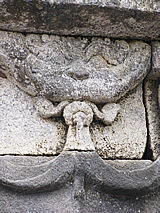 |
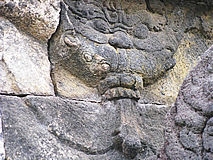 |
|
|
||
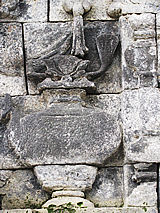 |
Last but not least: the "Vessel of Abundance", symbolizing the Cosmic Womb is also present here. You can find Her in almost all cultures/religions e.g. Hinduism, Christianity, Islam.....(LINK Istanbul cemetery). |
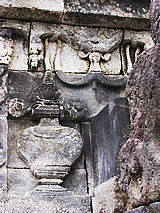 |
|
Prambanan-4
1997-2011
© Copyright Han Marie Stiekema. All rights reserved.
Everyone may use this website as a source of inspiration. However, since it
is freely given, no-one can claim, copy or derive any text, rights,
position or status from this website.
Last revising: 07/18/12
